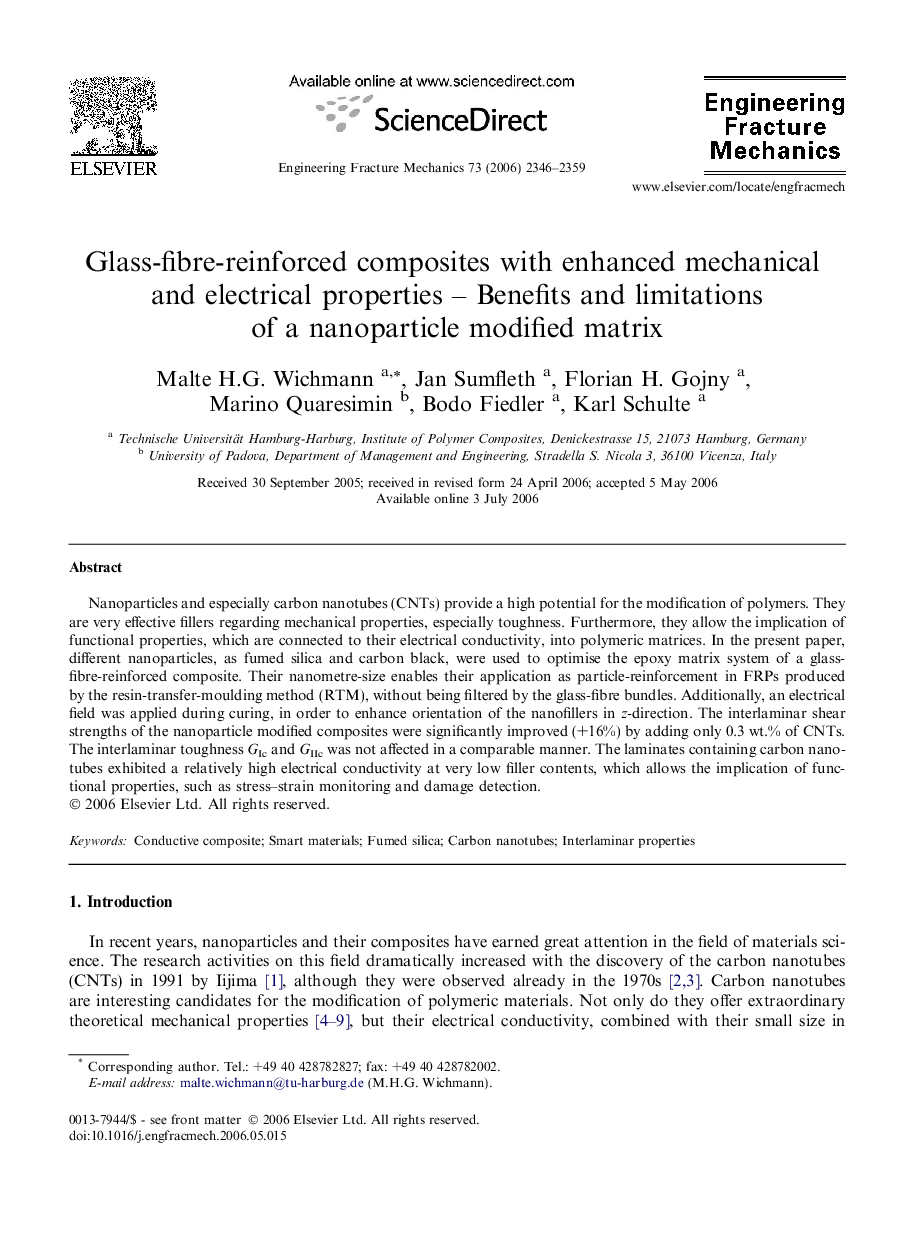| Article ID | Journal | Published Year | Pages | File Type |
|---|---|---|---|---|
| 768168 | Engineering Fracture Mechanics | 2006 | 14 Pages |
Nanoparticles and especially carbon nanotubes (CNTs) provide a high potential for the modification of polymers. They are very effective fillers regarding mechanical properties, especially toughness. Furthermore, they allow the implication of functional properties, which are connected to their electrical conductivity, into polymeric matrices. In the present paper, different nanoparticles, as fumed silica and carbon black, were used to optimise the epoxy matrix system of a glass-fibre-reinforced composite. Their nanometre-size enables their application as particle-reinforcement in FRPs produced by the resin-transfer-moulding method (RTM), without being filtered by the glass-fibre bundles. Additionally, an electrical field was applied during curing, in order to enhance orientation of the nanofillers in z-direction. The interlaminar shear strengths of the nanoparticle modified composites were significantly improved (+16%) by adding only 0.3 wt.% of CNTs. The interlaminar toughness GIc and GIIc was not affected in a comparable manner. The laminates containing carbon nanotubes exhibited a relatively high electrical conductivity at very low filler contents, which allows the implication of functional properties, such as stress–strain monitoring and damage detection.
